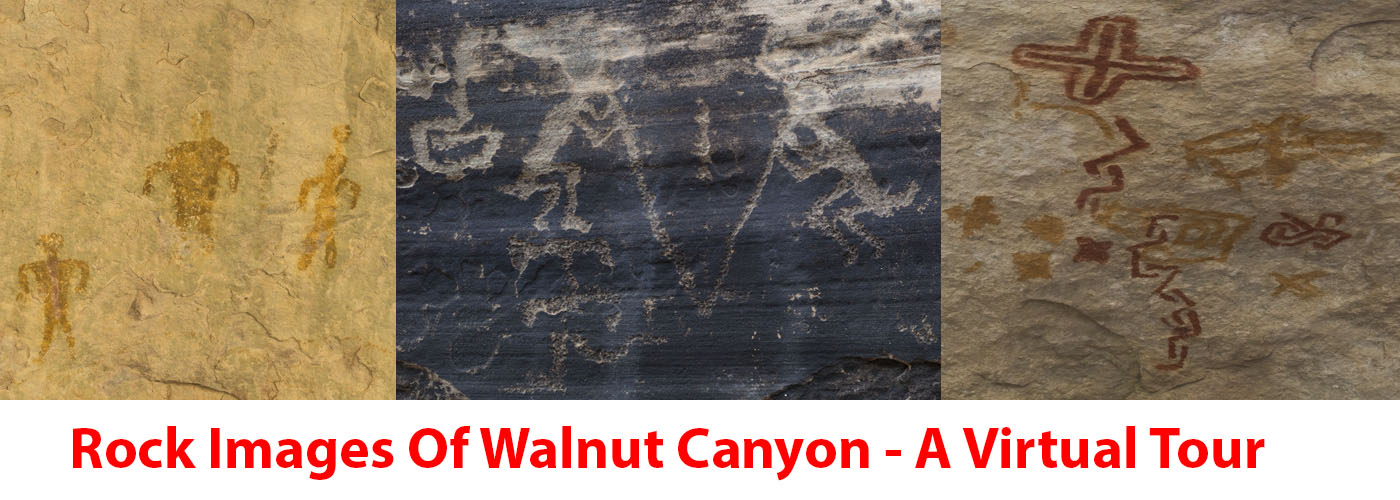The location of different types of rock images at Walnut Canyon is partially dictated by geology. The upper rock layers are the Kaibab Formation, which is a light-colored, very hard, ledge-forming limestone. This is ideal as a backdrop for pictographs, which can be shielded from the elements by the ledges. However, it is also very difficult to peck petroglyphs into, and consequently they are not generally found in these upper layers of the canyon.
Layers further down in the canyon are Coconino Sandstone, a much softer rock consisting of petrified sand dunes. In addition, a dark layer of “desert varnish” often forms on the surface; creating petroglyphs by pecking off the varnish can leave easy-to-view light symbols on a dark background. However, the Coconino Sandstone can have a “corrugated” surface as the tilted fossilized sand dunes erode away differentially, and this kind of surface is generally not suitable for petroglyphs. Furthermore, any pictographs painted on sandstone surfaces would likely erode away quite quickly. WACA 497, located at the bottom of the canyon, is an excellent example of these sandstone surfaces. Flat, varnished sandstone surfaces suitable for petroglyphs are sandwiched between eroded, corrugated surfaces.
This 360-degree panorama shows the WACA 497 outcrop in context to the main part of the canyon.
The petroglyphs are barely visible in the 360-degree panorama, but can be seen more clearly in 3D model below (which also gives a better view of the sandstone outcrop’s features).
For additional views, go to the “497 – A Closer Look” page.

